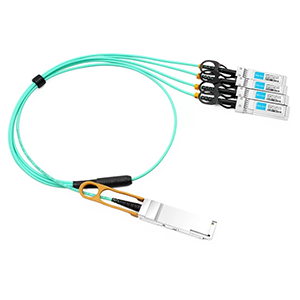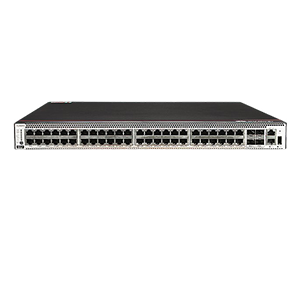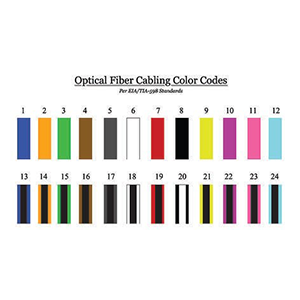Optical fiber undoubtedly plays an important role in modern communication networks. This article will focus on the size specifications of optical fiber. We will first explain the basic structure of optical fiber, including core, cladding and outer sheath, and briefly describe the propagation mechanism of light in optical fiber and its influencing factors. Next, we will introduce a variety of common optical fiber sizes, such as 9/125μm, 50/125μm, 62.5/125μm, etc., and explain the differences in parameters such as core diameter and cladding diameter of optical fibers of different sizes.
We will analyze the requirements for optical fiber size in different application scenarios and explain the key considerations for selecting the appropriate optical fiber size. In addition, we will explore the impact of optical fiber size on performance indicators such as transmission bandwidth and attenuation, and compare the advantages and disadvantages of optical fibers of different sizes in actual network deployment. Finally, we will analyze the development direction of current optical fiber technology and its driving factors, and predict the possible evolution of optical fiber size specifications in the future.
Basic structure and principle of optical fiber
Let me introduce you to the basic structure and working principle of optical fiber in detail.
Basic structure of optical fiber:
Optical fiber is mainly composed of the following three parts:
(1) Core
- Located in the innermost layer of the optical fiber, it is the main medium for optical signal transmission.
- Made of glass or plastic materials with high refractive index, the diameter is usually around 8-10 microns.
(2) Cladding
- Located on the outside of the core layer, it plays a role in reflecting and limiting optical signals.
- Made of materials with lower refractive index, the diameter is about 125 microns.
(3) Coating
- Located in the outermost layer of the cladding, it plays a role in protecting the optical fiber from damage by the external environment.
- Usually made of polymer materials, with diameters ranging from about 250 to 900 microns.
These three parts together constitute the complete optical fiber structure.
The propagation mechanism of light in optical fiber:
The propagation of optical signals in optical fibers mainly relies on the principle of total reflection:
(1) When the optical signal propagates in the core layer, due to the difference in refractive index between the core layer and the cladding layer, the optical signal will be totally reflected at the interface between the two layers.
(2) As a result, the optical signal can be efficiently transmitted in the optical fiber along the core layer, reducing energy loss.
The main factors that affect the propagation of light in optical fiber include:
- The purity and uniformity of optical fiber materials
- The difference in refractive index between the core and cladding of the optical fiber
- The geometric size and shape of the optical fiber
- The possible bends and twists in the optical fiber
By optimizing these factors, the transmission efficiency and reliability of the optical fiber can be improved. In general, the basic structure of optical fiber and the principle of total reflection transmission determine its important position and wide application in modern communication networks.
Common size specifications of optical fiber
Let me introduce you to the common size specifications of optical fiber in detail.
9/125μm optical fiber
- Also known as single-mode optical fiber (SMF)
- The core diameter is 9 microns and the cladding diameter is 125 microns
- Mainly used for long-distance, high-capacity communication applications
50/125μm optical fiber
- Also known as multi-mode optical fiber (Multi-Mode Fiber, MMF)
- The core diameter is 50 microns, and the cladding diameter is 125 microns
- Used for medium and short distance communication and data transmission
62.5/125μm optical fiber
- Also multimode optical fiber
- The core diameter is 62.5 microns, and the cladding diameter is 125 microns
- It is the most widely used in the early days Pan-multimode fiber specifications
100/140μm fiber
- Also belongs to multimode fiber
- Core diameter is 100 microns, cladding diameter is 140 microns
- Mainly used in industrial automation, medical and other fields
We can see that different fiber size specifications have certain differences in core diameter and cladding diameter. In general: single-mode fiber has a smaller core diameter and stronger transmission capacity, but has higher requirements for interface alignment. Multimode fiber has a larger core diameter and relatively loose interface alignment requirements, but its transmission capacity is slightly worse than single-mode. In different application scenarios, it is necessary to select the appropriate fiber specifications based on factors such as transmission distance and bandwidth requirements
Option of fiber size specifications
Let me analyze in detail how to choose the appropriate fiber size specifications in different application scenarios.
Requirements for fiber size in different application scenarios:
(1) Long-distance communication network
- Single-mode fiber (9/125μm) is more suitable
- Single-mode fiber has a long transmission distance and low loss, and is more suitable for long-distance applications such as backbone networks and metropolitan area networks
(2) Medium- and short-distance data transmission
- Multimode fiber (50/125μm or 62.5/125μm) is more suitable
- Multimode fiber has relatively loose interface alignment requirements and is more suitable for medium- and short-distance applications such as local area networks and building networks
(3) Industrial/medical fields
- 100/140μm optical fiber may be more suitable
- This larger core diameter optical fiber is more durable and suitable for industrial automation, medical equipment and other application scenarios
Key factors for choosing the right optical fiber size:
(1) Transmission distance
- Single-mode optical fiber is more suitable for long-distance transmission, while multi-mode optical fiber is suitable for medium and short distances
(2) Bandwidth requirements
- Single-mode optical fiber generally has a larger bandwidth and can meet high-speed transmission requirements
- The bandwidth of multi-mode optical fiber is slightly smaller than that of single-mode, but it can still meet most application scenarios
(3) Interface alignment requirements
- Single-mode fiber has a smaller core diameter, so it requires higher accuracy in interface alignment
- Multimode fiber has a larger core diameter, so it requires less accuracy in interface alignment
(4) Cost budget
- Single-mode fiber is usually more expensive than multimode fiber
- If cost is the main consideration, multimode fiber may be more suitable
Taking all the above factors into consideration, it is very important to select the appropriate fiber size specification according to the specific application requirements.
Relationship between fiber size and performance
Let me analyze in detail the relationship between fiber size and its performance indicators, as well as the advantages and disadvantages in actual network deployment.
The impact of fiber size on transmission performance:
(1) Bandwidth
- The bandwidth of single-mode fiber is usually higher than that of multi-mode fiber, and it can support higher transmission rates.
- This is mainly because single-mode fiber only supports the propagation of one optical mode, while multi-mode fiber has multiple optical modes.
(2) Signal attenuation
- The signal attenuation of single-mode fiber is usually lower than that of multi-mode fiber, and it can achieve longer distance transmission.
- This is because the structure of single-mode fiber is more optimized, and the propagation of optical signals in the core layer is more stable.
(3) Dispersion
- The dispersion characteristics of single-mode fiber are better, and it can better maintain the integrity of optical pulses.
- This is conducive to improving transmission quality and reducing inter-symbol interference.
To sum up, single-mode fiber has better performance than multi-mode fiber, but it is also more expensive.
Comparison of advantages and disadvantages in actual network deployment:
(1) Single-mode fiber
- Advantages: long transmission distance, large bandwidth, strong anti-interference, suitable for backbone network and metropolitan area network
- Disadvantages: high interface alignment requirements, high cost, not suitable for LAN and home applications
(2) Multimode fiber
- Advantages: relatively loose interface alignment requirements, low cost, suitable for medium and short distance LAN
- Disadvantages: relatively short transmission distance, slightly lower bandwidth than single-mode, not suitable for long distance and high bandwidth requirements
Therefore, in actual network deployment, it is necessary to select the appropriate single-mode or multi-mode fiber according to the specific application scenario, transmission distance, bandwidth requirements and other factors. Both types of fiber have their own advantages and disadvantages, and it is necessary to weigh the pros and cons before making a choice.
Future Development Trend of Fiber Size Specifications
Let me analyze the current development trend of fiber technology and the possible evolution of fiber size specifications in the future.
Current Development Direction of Fiber Technology:
(1) Further reduction of core diameter
- The core diameter of single-mode fiber is gradually shrinking from 9 microns to 8 microns or even smaller.
- This is conducive to further improving the transmission bandwidth and transmission distance of single-mode fiber.
(2) Increased core diameter of multimode fiber
- The core diameter of multimode fiber is also gradually increasing, from 50/125 microns to 62.5/125 microns or even larger.
- A larger core diameter is conducive to improving the bending resistance and optical coupling efficiency of the fiber, and is suitable for medium and short distance applications.
(3) The emergence of new fiber structures
- New optical fibers such as photonic crystal fibers with special cladding structures and double-cladding fibers are being developed.
- These new optical fiber structures can further improve the transmission performance of optical fibers.
These development trends are all based on meeting the needs of different application scenarios.
Possible evolution of optical fiber size specifications in the future:
(1) Single-mode fiber size continues to shrink
- The core diameter of single-mode fiber develops towards 6-7 microns to meet higher bandwidth requirements.
(2) Multimode fiber size increases
- The core diameter of multimode fiber may develop towards 100/140 microns or even larger to improve bending resistance.
(3) Emergence of emerging fiber specifications
- In the future, new fiber specifications based on new fiber structures may emerge to meet more professional application requirements.
In general, with the continuous advancement of fiber technology, fiber specifications will develop in the direction of higher performance and more specialization in the future to meet the needs of communication networks in different fields.
Summary
Correct selection and deployment of fiber specifications are crucial for high-performance and reliable network architecture. Our company has long been focusing on the research and development and production of optical communication equipment and its supporting products, and has rich industry experience. The various fiber products we provide have reached the industry-leading level in terms of transmission performance and reliability, and can meet your demanding needs for flexible and efficient network construction.
Whether you need to deploy 9/125μm, 50/125μm or 62.5/125μm fiber in a telecom operator network, data center, or enterprise park, we can provide you with customized solutions. At the same time, our professional team will provide you with a full range of technical support, including on-site survey, solution design, equipment installation and maintenance, etc. Contact us now to learn more about the application of optical fiber size.
What Are The Sizes Of Optical Fiber FAQ
The core diameter of standard single mode fiber is typically 8-10 microns.
Multimode fiber core sizes are typically either 50 or 62.5 microns in diameter.
The cladding, which surrounds the fiber core, is typically 125 microns in diameter for both single mode and multimode fiber.
Yes, some specialized multimode fibers may have core sizes of 100 or 105 microns, but these are less common.
Smaller core single mode fiber has higher bandwidth but requires more precise termination. Larger multimode cores are easier to couple but have lower bandwidth.
Excluding the cable jacket, the typical outer diameter of a bare optical fiber is around 250 microns.
Yes, optical fiber cables can range from 900 microns up to 3-4 mm in outer diameter, depending on the cable construction and number of fibers.
Fiber diameter impacts factors like minimum bend radius, routing, and compatibility with interconnect components.
Yes, organizations like the IEC and TIA have established standards for common single mode and multimode fiber dimensions.
It is generally not recommended to mix fibers of different core sizes, as this can lead to coupling losses and compatibility issues.




